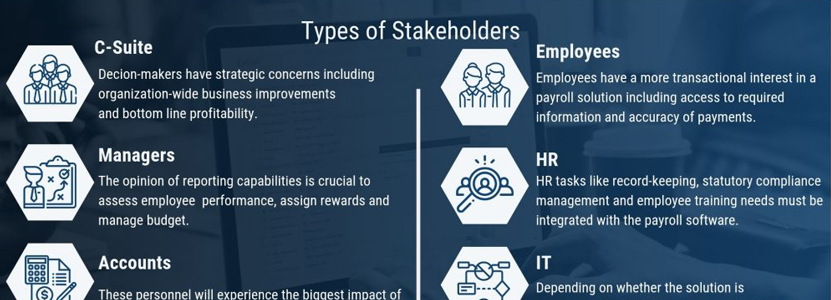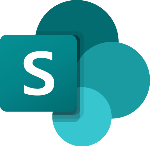One of the most vital aspect of a business is payroll. An aspect that can easily turn into an encumbrance to organizational growth, if not managed correctly. Besides varying salaries, there are multiple other factors like shift differentials, leaves, increments, bonuses, benefit contributions, taxes to be calculated while calculating payroll. Factoring in all the details to calculate each employee’s dues correctly can be a mammoth task for even the smallest of companies, let alone large enterprises.
The crucial criterion for flawless payroll conversion is a streamlined calculation process that caters to the unique needs of a company while minimizing the human effort and time required – a capability that can be achieved with a robust payroll solution. If you haven’t made a decision about adopting a cloud based HRMS payroll management solution yet, know more about the 4 key factors that you must consider before choosing one:
1. Types of stakeholders:
The first step towards a successful implementation project is identifying the groups of people with the highest stake or interest in it. Insufficient consideration of their interest level, doubts, requirements and suggestions can eventually lead to improper assumptions about the project/product, which can result in low adoption rates and user dissatisfaction. Based on the findings of a stakeholder interest analysis, a detailed stakeholder engagement strategy can be designed, and the concerns and doubts of each group can be addressed and resolved adequately.
Every organization is likely to have a unique stakeholder hierarchy structure, but the common groups may include:

2. Types of responses:
Organizational change is often not met with the same enthusiasm amongst all employees. Some are emotional, some are practical, some are simply not enthusiastic. Thus, expect low interest levels from sections of your workforce and evaluate and consider options to overcome the same.
3. Types of training:
Adoption of a mission-critical and organization wide system requires training to ensure optimum utilization. When it comes to payroll management system, different stakeholders will have different training requirements. For example – the C-suite will need to understand reports and analytics well, while employees will be using the self-service portal. With criteria so varied, there is need for a comprehensive training strategy that would aim to bridge the gaps in understanding about the new solution, and in turn, increase adoption. The key elements of a such a strategy would include:
4. Engaging the help of consultants:
Adopting a payroll management system encompasses significant changes at all levels of an organization. Thus, to ensure the right evaluation, a smooth implementation, the maximum adoption and optimum utilization of resources, its critical to engage Payroll consultants:
It is important to know that an implementation of a payroll management system is much more than platform integrations, systems testing, and data migration. It revolves around people – an organizations’ biggest asset. Adopting a robust HRMS like Octane, with a comprehensive payroll, can help you ensure that this crucial organizational transformation is achieved smoothly with significant advantages to, and therefore support from, both employees and decision makers.




















































